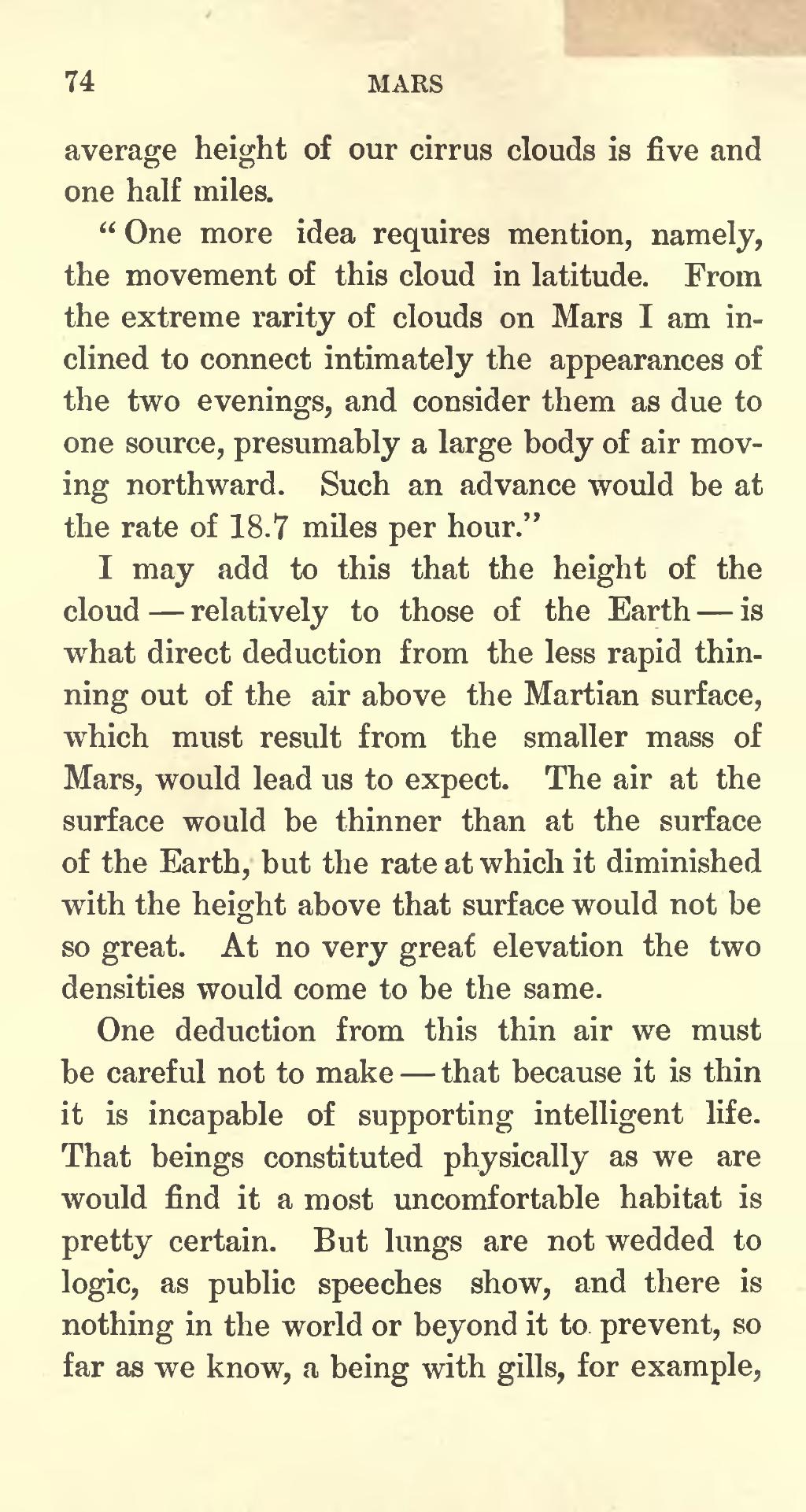average height of our cirrus clouds is five and one half miles.
“One more idea requires mention, namely, the movement of this cloud in latitude. From the extreme rarity of clouds on Mars I am inclined to connect intimately the appearances of the two evenings, and consider them as due to one source, presumably a large body of air moving northward. Such an advance would be at the rate of 18.7 miles per hour.”
I may add to this that the height of the cloud—relatively to those of the Earth—is what direct deduction from the less rapid thinning out of the air above the Martian surface, which must result from the smaller mass of Mars, would lead us to expect. The air at the surface would be thinner than at the surface of the Earth, but the rate at which it diminished with the height above that surface would not be so great. At no very great elevation the two densities would come to be the same.
One deduction from this thin air we must be careful not to make—that because it is thin it is incapable of supporting intelligent life. That beings constituted physically as we are would find it a most uncomfortable habitat is pretty certain. But lungs are not wedded to logic, as public speeches show, and there is nothing in the world or beyond it to prevent, so far as we know, a being with gills, for example,
